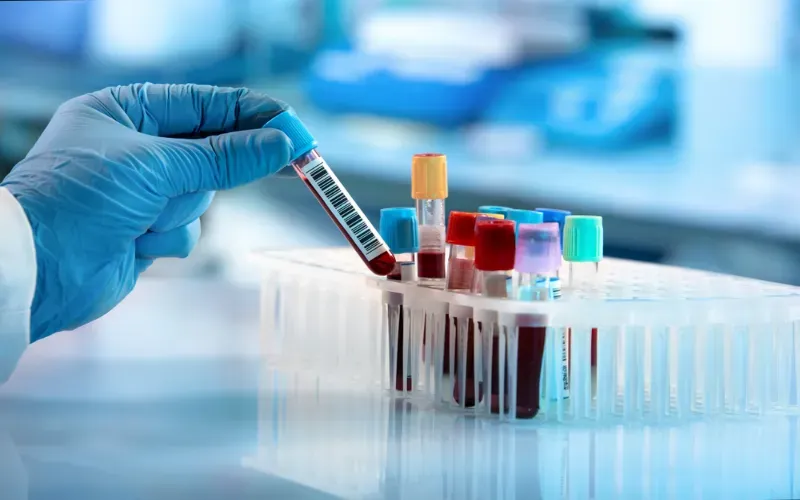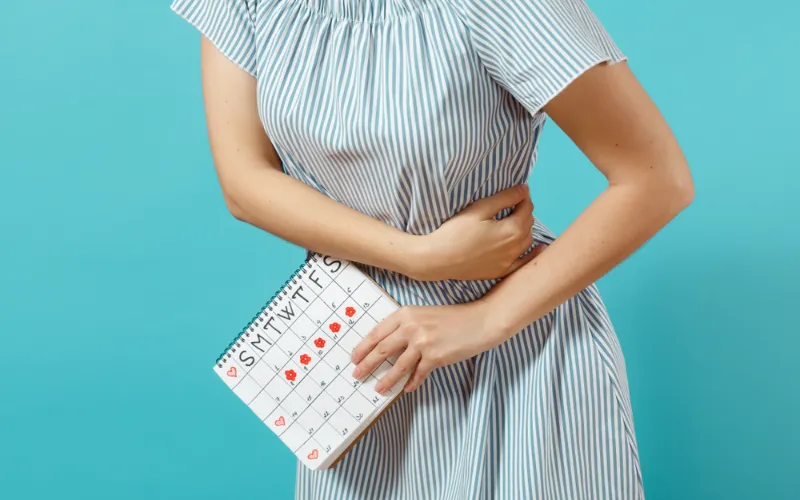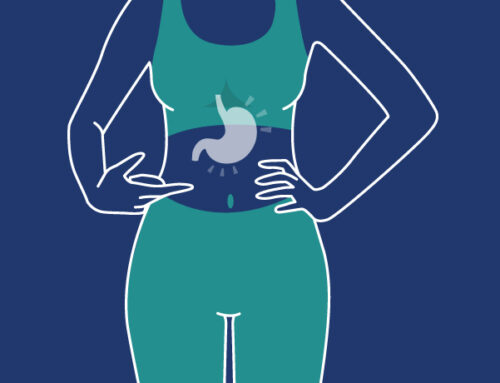You’re not alone if you’re left perplexed and in discomfort due to unexpected cramping a week after your period. Many women are scratching their heads, wondering why this unpleasant sensation is still tagging along well beyond its due date. The good news? There could be several explanations, ranging from utterly mundane to a potential need for medical attention. In our comprehensive guide today, we delve into the labyrinth of possibilities that could be attributed to this post-period puzzler.
Cramping one week after your period can be caused by various factors, including endometriosis, PMDD (premenstrual dysphoric disorder), complex ovarian cysts, or other underlying conditions. It is important to consult with a healthcare provider to determine the exact cause of your symptoms and discuss appropriate treatment options.
Understanding Cramping After Period
Experiencing cramping one week after your period can be a perplexing and frustrating ordeal. It’s important to understand that the menstrual cycle is a complex system influenced by various factors, and cramping can have several underlying causes after your period. While mild discomfort or spasms may be considered normal, severe or persistent cramping should not be ignored.
The perplexity of Cramping After Period
Cramping after your period is known as secondary dysmenorrhea, which is more common during adulthood. This type of cramping differs from the cramps experienced during menstruation, which are caused by the shedding of the uterine lining. Secondary dysmenorrhea occurs due to certain conditions and can manifest as pain in the lower abdomen or pelvic region.
Learn More About Purple Period Blood Explained: Causes & Treatment
Possible Causes For Cramping
Possible causes for cramping after your period include endometriosis, adenomyosis, pelvic inflammatory disease (PID), uterine fibroids, ovarian cysts, cervical stenosis, ectopic pregnancy, implantation, and even ovulation cramps (mittelschmerz).
Endometriosis is a condition where tissue similar to the lining of the uterus grows outside the uterus. This abnormal growth can cause painful cramping before, during, and after your period. Treatment options vary depending on the severity of symptoms and may include medication, hormone therapy, or surgery.
Adenomyosis occurs when there is abnormal tissue growth within the muscular wall of the uterus. This can lead to heavy or prolonged menstruation and severe cramping. Treatment options may include medication or even a hysterectomy in extreme cases.
A bacterial infection in the reproductive organs causes pelvic inflammatory disease (PID). Symptoms include lower abdominal or pelvic pain and abnormal vaginal discharge. Treatment often involves a course of antibiotics and temporarily avoiding sexual activity.
Uterine fibroids are noncancerous growths that can develop on or within the uterus. While symptoms can vary greatly among individuals, they may include painful cramping and heavy bleeding. Treatment options range from medication to medical procedures or surgery.
Ovarian cysts are fluid-filled sacs that can develop on the ovaries. They can cause post-period bleeding and cramping. Most cysts naturally disappear, but larger ones may lead to pelvic pain. Medication or surgery may be necessary for treatment.
Cervical stenosis occurs when the cervix has a small opening, leading to painful uterine pressure. Treatment options depend on the severity and may involve medication, surgery, or the insertion of an intrauterine device (IUD).
It’s important to note that cramping one week after your period could also indicate more serious conditions such as ectopic pregnancy. In this case, a fertilized egg implants outside the uterus, causing abnormal bleeding, severe abdominal or pelvic pain, and cramping. Immediate medical care is required for resolution.
On the other hand, less severe causes like implantation bleeding can also result in light spotting and uterine cramping as a fertilized egg embeds itself in the uterine lining. Taking a home pregnancy test can help confirm this possibility if you suspect pregnancy.
Lastly, ovulation cramps (mittelschmerz) can occur around one week after your period ends. These lower abdominal pains are caused by ovulation and may last up to two days. It’s important to differentiate these from other causes of post-period cramping.
By understanding these potential causes, Sarah can now have an informed discussion with her healthcare provider to investigate any underlying conditions contributing to her cramping one week after her period.
Now that we have explored the possible causes, let’s understand the role of hormone cycles and muscle contractions in post-period cramping.
Experiencing cramping one week after your period can have several underlying causes that should not be ignored, including endometriosis, adenomyosis, pelvic inflammatory disease (PID), uterine fibroids, ovarian cysts, cervical stenosis, ectopic pregnancy, implantation and even ovulation cramps (mittelschmerz). It is important to understand these potential causes in order to have an informed discussion with a healthcare provider to investigate any underlying conditions contributing to the cramping.
The Role of Hormone Cycles and Muscle Contractions
An intricate dance of hormones orchestrates the menstrual cycle. During a typical 28-day cycle, hormone levels fluctuate, guiding the release of an egg from the ovary each month. These hormonal shifts can lead to various symptoms, including cramping.
The Ovulation Phase and Hormonal Shifts
As ovulation takes place, estrogen levels rise, causing the uterine lining to thicken in preparation for pregnancy. If fertilization does not occur, hormone levels shift yet again. Progesterone rises, leading to the shedding of the uterine lining during menstruation.
Post-period contractions and Cramping
During this post-period phase, hormone levels stabilize, but residual hormonal changes can still impact muscle contractions within the uterus. These contractions can cause cramping as the body works to expel any remaining tissue or fluid from the uterus.
Understanding Hormonal Influence on Cramping
Just like how the rhythm and beats of a song dictate dancers’ movements on stage, hormone cycles, and muscle contractions play their part in orchestrating cramping after your period.
The intensity and duration of these cramps can vary widely among individuals. Factors such as sensitivity to hormonal fluctuations, individual pain thresholds, and underlying medical conditions can all contribute to differing experiences of post-period cramping.
The Role of Lifestyle Factors
Moreover, physical activity and stress levels can also influence cramping after your period. Regular exercise has been shown to reduce menstrual symptoms overall, including post-period cramps. Conversely, high stress levels can exacerbate symptoms by increasing tension within the body and affecting hormone balance.

Understanding how these factors interplay allows individuals like Sarah to approach managing their post-period cramps holistically. By maintaining a healthy lifestyle that incorporates exercise as a stress management tool and seeking appropriate treatment for underlying conditions if necessary, she can empower herself to find relief.
Also Check: Duration of Menopause: What Every Woman Should Know
Impact of Physical Activity and Stress Levels
Have you noticed that your cramping symptoms tend to worsen after a week of intense workouts or during high stress? There might be a connection between your physical activity, stress levels, and post-period cramping.
Stress and Hormonal Imbalances
Engaging in vigorous physical activities or exercising intensely can stress your body, including the muscles in your abdomen. This stress could potentially trigger cramping even after your period has ended. Similarly, high stress levels can contribute to hormonal imbalances and increased muscle tension, which may intensify cramping sensations.
Stress plays a significant role in the overall well-being of our bodies. When stress levels are elevated, our bodies produce more cortisol, the stress hormone. Elevated cortisol levels can affect hormonal balance and inflammatory responses, potentially exacerbating post-period cramping.
Finding Balance and Relief
Finding ways to manage your stress levels and incorporating regular exercise into your routine might help alleviate post-period cramping. Engaging in yoga, meditation, or deep breathing exercises can help reduce stress and promote relaxation in both your mind and body. Regular exercise can also help relieve muscle tension and promote better blood circulation, which may mitigate cramp-related discomfort.
Remember that everyone’s body is unique, so it’s important to listen to your own and pay attention to how it responds to various activities and stress levels. Making small adjustments to your routine and finding what works best for you is key.
Exploring Medical Contributors to Cramping
Let’s explore some common medical conditions that can contribute to post-period cramping.
Learn More about Navigating through the 4 Phases of Your Menstrual Cycle
Medical Conditions Leading to Post-Period Cramping
Several underlying medical conditions can cause cramping one week after your period has ended. Understanding these conditions is essential to seek appropriate medical attention and treatment if necessary.
Endometriosis: One possible cause of post-period cramping is endometriosis. This condition occurs when tissue similar to the lining of the uterus grows outside the uterus, leading to inflammation and pain. The tissue may continue to behave like the uterine lining, shedding, and bleeding during your menstrual cycle. This can result in persistent cramping even after your period has ended.
Pelvic Inflammatory Disease (PID): Pelvic inflammatory disease is an infection that affects the female reproductive organs, including the uterus, fallopian tubes, and ovaries. It can be caused by sexually transmitted infections or other types of bacteria. Symptoms of PID include lower abdominal or pelvic pain, abnormal vaginal discharge, and occasionally post-period cramping.
Uterine Fibroids: Uterine fibroids are noncancerous growths that develop within or on the muscular wall of the uterus. These growths can vary in size and number. Depending on their location and size, they can cause painful cramping during and after your period.
Ovarian Cysts: Ovarian cysts are fluid-filled sacs that develop on or within the ovaries. While most ovarian cysts are harmless and disappear independently, larger cysts can lead to post-period bleeding and cramping.
These are just a few medical conditions that can cause post-period cramping. It’s important to consult with a healthcare professional for an accurate diagnosis if you experience persistent or severe cramping after your period.
Endometriosis and Its Influence on Cramping
One of the possible causes of experiencing cramping one week after your period is endometriosis. Endometriosis is a condition where tissue similar to the lining of the uterus grows outside the uterus, causing pain and inflammation.
Symptoms Beyond Cramping
This abnormal tissue growth can result in severe cramping both during your period and before and after. It can also lead to other symptoms, such as heavy menstrual bleeding, pelvic pain, painful bowel movements or urination, and infertility.
A Personalized Scenario
For example, let’s say you have been experiencing intense cramps one week after your period for several months. The pain is debilitating, and it hinders you from going about your daily activities.
Diagnosis and Treatment
You visit a healthcare provider who suspects endometriosis based on your symptoms and medical history. They may then recommend further tests like imaging or laparoscopic surgery to confirm the diagnosis.
Once diagnosed with endometriosis, various treatment options are available depending on the severity of your symptoms and your reproductive goals. Hormone therapy, such as birth control pills or gonadotropin-releasing hormone agonists, can help manage pain and reduce the growth of endometrial tissue. Surgery may be necessary to remove the abnormal tissue or address any complications that arise from endometriosis.
The Importance of Seeking Help
It’s important to note that endometriosis isn’t something to ignore or dismiss as “just period cramps.” It is a chronic condition that requires proper medical attention and management. If you suspect you may have endometriosis, consult with a healthcare professional who can guide you through appropriate diagnosis and treatment options.
PMDD and Ovarian Cysts as Potential Causes
Premenstrual Dysphoric Disorder (PMDD) and ovarian cysts are two other potential causes for experiencing cramping one week after your period. PMDD is a severe premenstrual syndrome that can cause emotional and physical symptoms before menstruation.
Symptoms and Impact on Life
These symptoms can include mood swings, irritability, fatigue, bloating, breast tenderness, and cramping.
Imagine you start noticing that every month, about a week after your period ends, you experience intense mood swings and heightened emotions. You feel irritable and tired, with persistent cramping in your lower abdomen. These symptoms significantly impact your daily life and relationships, leaving you exhausted and frustrated.
The Role of Ovarian Cysts
Similarly, ovarian cysts can contribute to post-period cramping. Cysts are fluid-filled sacs that develop on or inside the ovaries. While many cysts are harmless and resolve independently, some can cause discomfort or complications. If a cyst continues to grow or becomes twisted (ovarian torsion), it may lead to cramps and pain.
| Comparing Endometriosis, PMDD, And Ovarian Cysts |
| Endometriosis |
| Involves abnormal tissue growth outside the uterus |
| Can cause pain during various menstrual phases |
| Treatment options include hormone therapy or surgery |
It’s crucial to consult with a healthcare professional for an accurate diagnosis if you suspect PMDD or ovarian cysts as possible causes for your post-period cramping. They can provide appropriate treatment options based on your individual circumstances.
Preventive Measures for Post-Period Cramping
Experiencing cramping one week after your period can be frustrating and uncomfortable. While it’s important to consult with a healthcare professional for an accurate diagnosis, there are preventive measures you can take to alleviate or reduce the intensity of post-period cramping potentially.
Stress Management and Its Impact
One of the key factors to consider is stress management. Stress has been known to exacerbate menstrual symptoms, including cramping. Engaging in activities that help you relax and destress, such as yoga, meditation, or deep breathing exercises, may help alleviate cramps.
Importance of a Healthy Lifestyle
Maintaining a healthy lifestyle is also crucial. Eating a balanced diet , vegetables, whole grains, and lean proteins provide essential nutrients supporting overall reproductive health. Staying hydrated by drinking plenty of water can also help prevent muscle muscle-balanced diet rich in fruit cramps.
Beneficial Effects of Exercise
Jennifer, who experienced severe cramping one week after her period, decided to incorporate regular exercise into her routine. She found that engaging in moderate-intensity exercises like jogging or swimming helped improve blood circulation and reduce cramping. Exercise releases endorphins, which can positively impact mood and reduce pain perception.
Alternative Therapies for Relief
Another preventive measure is to explore alternative therapies such as acupuncture or massage. These practices have been reported to relieve menstrual pain and cramping by promoting relaxation and improving blood flow.
If preventive measures don’t yield satisfactory results and you continue experiencing cramping one week after your period, it’s essential to take the next steps to address this issue effectively.
Next Steps If Cramping Continues One Week After Period
Persistent cramping one week after your period may indicate an underlying condition that requires medical attention. It’s vital not to ignore these symptoms and consult with a healthcare professional for an accurate diagnosis and appropriate treatment plan.
Annie’s Story: The Importance of Diagnosis
Annie had been experiencing consistent cramping for several months after her period ended. Concerned about her well-being, she decided to visit her gynecologist. The doctor conducted a thorough examination and ordered additional tests to identify the cause of the persistent cramping. It was discovered that Annie had endometriosis, a condition where tissue similar to the lining of the uterus grows outside of it. With this diagnosis, Annie and her doctor discussed different treatment options, including medication, hormone therapy, or surgery if necessary.
The Role of Diagnostic Tests
Visiting a healthcare professional will enable a comprehensive evaluation of your symptoms and help determine if further diagnostic tests, such as ultrasounds or blood work, are needed.

Guided Medical Intervention
Think of it as seeking guidance from an experienced tour guide who can assist you in navigating through unfamiliar territory. They have the knowledge and expertise to provide the right direction for your situation.
Customized Treatment Plans
Your healthcare provider may recommend various treatment options tailored to your needs based on the diagnosis. These could include prescription medications for pain and inflammation, hormonal therapies to regulate your menstrual cycle, lifestyle changes to reduce symptoms, or surgical interventions for more severe conditions.
The Individualized Journey to Relief
Remember, each individual’s experience is unique, and what works for one person may not work for another. That’s why it’s essential to communicate openly with your healthcare provider and follow their guidance throughout the process.
Is it normal to experience cramping one week after a period?
Yes, it is normal to experience cramping one week after a period. This is known as mid-cycle or ovulation cramping and occurs when the egg is released from the ovary.
When should I be concerned about post-period cramps and seek medical attention?
Suppose your post-period cramps are significantly more intense or prolonged than usual, accompanied by heavy bleeding, fever, or other unusual symptoms such as foul-smelling discharge. In that case, it is advisable to seek medical attention. While occasional mild cramping is normal, severe and persistent cramps could indicate an underlying issue such as endometriosis or pelvic inflammatory disease.
Can pregnancy be a reason for experiencing cramps post-menstruation?
No, pregnancy is not a common reason for experiencing cramps one week after your period. Cramping during pregnancy usually occurs around the time of implantation or during early pregnancy as the uterus adjusts to accommodate the growing fetus.
What are the most common causes of cramping a week after a menstrual cycle?
A week after a menstrual cycle, the most common causes of cramping include ovulation pain and secondary dysmenorrhea. Ovulation pain, or Mittelschmerz, occurs when the egg is released from the ovary and can cause mild to moderate cramping.
How long can cramping last, and what is the best way to relieve this pain?
Cramping after a period can last anywhere from a few hours to a few days. While generally considered normal, persistent or severe cramping might indicate an underlying condition. To relieve this pain, you can try over-the-counter pain relievers like ibuprofen or applying a heating pad to the lower abdomen..




